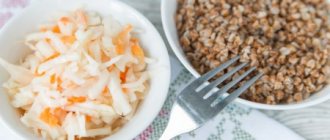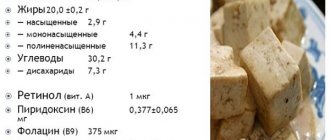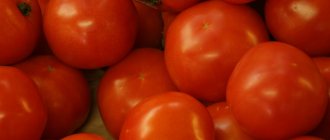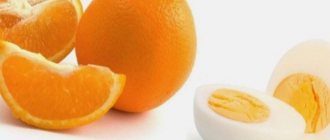Lose weight up to 3 kg in 5 days. The average daily calorie content is 1000 Kcal.
The weight loss technique with the unusual name “little diet” has several options. They allow you to lose a small amount of kilograms that a person has eaten lately, and lose weight quite significantly. We invite you to choose the method of losing unnecessary weight that is right for you.
Small Diet Requirements
First option
A small diet is recommended for people who want to get rid of 2-3 kilograms. “New” weight (recently gained) is lost especially well on it. If, at the end of the technique, you do not attack the harm, the result will please you for a long time. You need to eat four times a day, basing the menu on lean meat, low-fat dairy products, fruits and vegetables. All drinks on a small diet should be drunk without sugar, but, if desired, you can “pamper” them with a sweetener. It is recommended to give up eating after 19:00 and engage in at least basic exercise. Every morning, 20-30 minutes before breakfast, you need to drink a glass of water to wake up the body and start metabolic processes. It is advisable to give up salt during the diet period or supply it to dishes in small quantities and immediately before meals, and not during the cooking process.
The small diet also includes the “saucer” diet.
or
"small plate"
. As nutritionists note, the reason for the excess weight of most people lies in banal overeating. Many people eat two (even three) times more food than they need. The saucer diet consists of simple rules. So, you need to eat four times a day, but all the products consumed, designed for one meal, should fit into an ordinary saucer. This diet does not impose taboos on certain foods. You can eat whatever you want. Do you want to “eat up” a cake or a bar of chocolate? No problem. The main thing is that the food fits into the recommended utensil. But, of course, you should try to build your main diet on healthy food. Otherwise, even if you do not exceed your normal caloric intake and lose weight by eating unhealthy foods, your body may begin to experience a noticeable lack of nutrients, which it should get from the right foods. So try to make sure that there is room in the menu for vegetables, fruits, lean meats, fish, seafood, cereals, low-fat sour milk and milk. This will not only promote weight loss, but also support the normal functioning of the body.
As for weight loss, if you have a noticeable amount of extra kilos, you can lose up to five of them in the first seven days. In the second week, as a rule, half the weight is lost. Further, the body may “melt” a little slower, and this is normal. If you feel good, you can follow this diet until you are satisfied with your figure. The effectiveness of this type of small diet is determined by the fact that by cutting out unnecessary food, the calorie content of your diet is also reduced.
It is worth noting that too sharp a decrease in food volume can be stressful for the stomach. If you previously ate significantly more, then cut back on the size of your food more gradually. Let's say, instead of the usual three saucers (if you ate about that much at a time), for the first couple of diet days, eat 2 saucers of food per meal. For another 2-3 days, eat one and a half saucers of food at a time and only then introduce the rules of the diet in all severity. Perhaps in this case, weight loss will not make itself felt at lightning speed, but it will happen without noticeable physiological and psychological discomfort.
The correct way out of the “saucer” diet involves only a slight increase in the usual volume of food and is achieved by adding calories. Add calories little by little until the weight stops coming off. It is also recommended to add weight to dishes in a useful way, this is especially important in the first post-diet period. For example, you can eat not an empty vegetable salad, but seasoned with vegetable oil, a little butter or sour cream can be added to porridge, instead of an apple or pear, eat a more high-calorie banana, or treat yourself to grapes.
As you know, many celebrities eat according to the “saucer” method (Natalia Koroleva, Anzhelika Varum, Ksenia Sobchak, etc.).
On a small diet, it won’t hurt to take a complex of vitamins and minerals, which will help the body function fully without feeling a lack of important components.
A week
There are countless 7-day diets out there. Starting from single-component nutrition and ending with a varied diet. Among those losing weight, there is a diminutive term for this technique - “week”.

Any product can be the basis of your weekly diet: be it buckwheat or chicken breast, fresh cabbage or freshly squeezed juices. In such a short period of time, the diet allows you to see good results. So, reviews indicate a weight loss of 5 kg, and someone was able to get rid of 7 kg.
Rules
The general principles of the 7-day diet are as follows:
- complete refusal of sweet, salty, smoked, fried foods;
- Baked goods, sauces, and canned food are prohibited;
- 3-5 meals;
- daily consumption of clean water - at least 2 liters;
- Light physical activity is encouraged (for example, exercises, gymnastic exercises, yoga, etc.);
- It is allowed to drink herbal and green teas, decoctions, and infusions.
Advantages
The main and only advantage of a weekly diet is rapid weight loss. Some reviews indicate a decrease in abdominal volume by up to 10 cm. This is due to the low calorie content of the diet. Some nutritional methods barely reach 500 kcal per day.

Attention! Doctors say that for the body to function properly, it is necessary not to lower your diet below 1200 kcal. Otherwise, unpleasant consequences are possible (for example, a slowdown in metabolism).
Harm
Despite the fact that the weekly nutrition system is an effective method, it has many disadvantages.
Imbalanced diet
During extreme nutritional restriction, the human body does not receive enough important vitamins and microelements. This can lead to such unpleasant consequences as hair loss, pale complexion, circles under the eyes, etc.
Formation of gallstones
Doctors warn that a low-calorie diet contributes to the formation of gallstones. Rapid weight loss causes our liver to release extra cholesterol. And this, in turn, leads to gallstones. Doctors cite statistics: 80% of people who are addicted to low-calorie diets have gallstone disease.

Fatigue and irritability
Due to the fact that few nutrients enter the body, people get tired faster. Some of them feel apathetic and have a bad mood. This is due to the fact that blood sugar levels drop. A person lacks strength, energy and the hormone of joy - serotonin.
Headaches and bad breath
Migraines, as well as bad breath, occur with a limited amount of carbohydrates in the diet. And while you can take a pill for a headache, you can’t cope with the smell. Sprays, rinses and toothpastes will not help here.
Loss of muscle mass
Yes, express diets fight excess weight. However, the word “extra” should be understood as various structures in our body. This is liquid, feces, muscle tissue and only then fat (it “burns” last). Excess fluid and muscle are the first things that leave our body during the 7-day diet.
Possible breakdown
Often, those losing weight note frequent breakdowns during the diet. The brain gives a signal that the body is in a stressful situation - in hunger. As a result, the person “gives up” and goes into gluttony. And this is fraught with even more weight gain.
Small diet for 5-8 days
Breakfast: whole grain toast with a slice of feta cheese or other low-fat cheese; a glass of skim milk (you can replace it with kefir or plain yogurt); orange or apple; cup of tea/coffee. Lunch: chicken (preferably breast) in an amount of about 150 g or the same amount of lean fish; a portion of a salad of non-starchy vegetables sprinkled with lemon juice; a piece of black bread; kiwi; Tea coffee. Afternoon snack: a glass of low-fat kefir or milk. Dinner: boiled fish/meat (up to 100 g) or 2 boiled chicken eggs; 200 g of vegetables, stewed or raw; a glass of any freshly squeezed juice; Tea coffee.
Beverages

Recent clinical studies have found that sugar-sweetened drinks have equally strong effects on weight gain in both adults and children. That is why the first thing you should give up is sweet soda. Also strictly prohibited are alcoholic beverages, fatty yoghurts, and hot chocolate.
Moreover, experts note that frequent consumption of tea and coffee reduces the likelihood of developing metabolic disorders even in older people. That is why green or herbal tea without sugar should be regularly included in the diet menu.
Regular mineral water, low-fat kefir and homemade fruit and vegetable juices will be no less useful. With the help of the latter, you can not only replenish the water balance in the body, but also quickly normalize digestive processes.
Example of a saucer diet
Monday
Breakfast: toast with a slice of cheese and tomato; tea or coffee, or juice. Lunch: 150 g of cooked vegetables, seasoned with low-fat sour cream. Afternoon snack: apple. Dinner: 100 g of baked fish with a few tablespoons of boiled beans.
Tuesday
Breakfast: boiled egg and a glass of natural yogurt; coffee. Lunch: tomato and slice of boiled pork. Afternoon snack: half a bun and a glass of kefir/yogurt. Dinner: up to 150 g vegetable stew.
Wednesday
Breakfast: 4-5 tbsp. l. muesli topped with yoghurt; tea or coffee. Lunch: a bowl of low-fat vegetable soup; whole grain bread. Afternoon snack: half a glass of strawberry and banana smoothie, and for those with a sweet tooth, another slice of dark chocolate is allowed. Dinner: sandwich with tuna, cucumber slices and lettuce; tea.
Thursday
Breakfast: 2 chicken eggs, fried with a tomato and a handful of spinach. Lunch: cucumber and tomato salad; a slice of ham or meat. Afternoon snack: 100 g low-fat cottage cheese with pieces of fruit. Dinner: turkey stew with peas and carrots.
Friday
Breakfast: a portion of oatmeal with dried apricots, which can be seasoned with 1 tsp. natural honey. Lunch: cream of mushroom soup. Afternoon snack: milkshake with added fruit. Dinner: a slice of stewed salmon and tomato.
Saturday
Breakfast: sandwich with cheese and lettuce; tea or coffee. Lunch: 100 g of stewed liver and cucumber. Afternoon snack: a slice of fruit pie or other favorite sweet; half a glass of kefir or natural yogurt. Dinner: beetroot and cheese salad with a drop of vegetable oil and lemon juice.
Sunday
Breakfast: fried chicken egg with cheese; toast; tea or coffee. Lunch: meat and lentil soup, which can be seasoned with a small amount of low-fat sour cream. Afternoon snack: pancake with berry filling. Dinner: cucumber and tomato salad.
Causes and Effects
The main reason for rapid weight gain is systemic overeating, in which the body receives calories in excess and does not expend them. At the same time, doctors note a tendency for middle-aged and elderly people to gain weight.
This is due to metabolic disorders and deterioration in the activity of the appetite center in the brain. In this state, people find it difficult to control hunger, causing them to require more food to satisfy physiological needs.
Additional provoking factors for obesity are:
- Sedentary lifestyle. At increased risk are office workers, drivers and other professionals who work while sitting and practically do not move during the day.
- Gourmets and connoisseurs of delicious food. Often, overeating becomes a habit, thanks to which excess weight is gained extremely quickly.
- Hormonal imbalances. Such diseases can lead to rapid weight gain over several months. Getting into shape will be extremely difficult without full-fledged drug therapy.
- Taking certain medications.
- Nervous breakdowns in which a person does not control what and in what quantities he consumes. This is especially common after a long “starvation” diet. In this state, the individual will consume food in huge quantities in order to satisfy hunger and “eat up” problems.
- Hereditary predisposition.
- Pregnancy or menopause.
- Thyroid diseases.
It is important to understand that obesity (especially in advanced stages) is not only an aesthetic defect in appearance. This disorder significantly increases a person’s risk of developing the following diseases:
- oncological lesions of the colon;
- degenerative joint lesions (arthritis, arthrosis);
- scoliosis and other spinal diseases arising from increased load;
- diseases of the heart and blood vessels, including extremely dangerous myocardial infarction, hypertension, coronary artery disease;
- lesions of the digestive system (gastritis, ulcers, pancreatitis, cholecystitis, dyskinesia and many others);
- neuroses, depression, chronic weakness.
Moreover, obesity is often the main cause of complexes and self-doubt. All this makes it difficult to create friendships, start a family, and feel like a healthy person in general.
It is for this reason that it is worth knowing that obesity is a serious problem that needs to be eliminated as a whole. Nutritionists recommend starting with diet and exercise.
The benefits of a small diet
- The main advantage of the small diet in the first option is that in a short time you can lose a couple of kilograms without experiencing an acute feeling of hunger and eating quite varied.
- Of course, you can talk about an even more varied diet by turning to the “saucer”. Here you do not need to completely give up any food products and you can lose weight without experiencing the torment of not being able to eat the desired sweetness.
- The balance of the technique allows you to stick to it for a long time and lose any amount of extra pounds.
- You can create a menu based on your taste preferences. There is no need to eat tasteless food that you don't like.
- The diet helps to shrink the stomach, which increases the chances of maintaining a slim figure for a long time.
Trying to lose weight at low weight
Let's start with the fact that I am 22 years old, weight 55-57 kg, height 165. There were many attempts to lose weight (I was always unhappy with my waist and small tummy), including:
1. Week-long fasting (only water and tea without sugar, as a result of gastritis)
2. Three weeks of daily running (the result of which were the most powerful quadriceps and a significantly smaller tummy)
3. Half-dance with bcaa for six months (cool abs somewhere under the fat)
4. An attempt to keep the diet within the normal diet and run for almost a month (the upper abs appeared, the gap between the thighs appeared, but the waist remained almost the same)
What I have now is a lazy carcass with rather thin arms and legs, overeating on sweets, and the only physical activity I do is butt exercises and stretching every other day. With genetics, I was both lucky and unlucky at the same time. From Mother Nature I got large breasts, which practically do not lose weight under any conditions, narrow hips, which gain weight very slowly and only on the inside (the photo shows how I neglected everything, right?), as well as a wide waist, which even when losing weight, you don’t get to the concept of “wasp”. What do I want to get as a result? Health comes first. Improve the functioning of the gastrointestinal tract, tidy up your skin, hair, nails and, of course, lose weight. Procedure:
What can you eat on a limited basis?
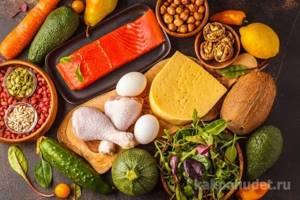
Due to the increased calorie levels, the following foods should be consumed in moderation:
- fatty fermented milk products;
- potato;
- corn;
- nuts;
- mushrooms;
- dried fruits;
- pasta;
- legumes;
- eggs;
- bread.
Worth knowing! Vegetables can be consumed raw, boiled or baked. Moreover, a double boiler is considered an indispensable assistant in preparing dietary dishes. It is ideal for both meat and vegetable dishes.
Prohibited Products

If a person has set a goal to lose weight, he should completely exclude the following foods from his diet:
- butter;
- salo;
- fatty meat and decoctions from it (pork, lamb, duck);
- mayonnaise and any dishes with the addition of this sauce;
- fatty cheeses;
- cream and sour cream with high fat content;
- smoked products;
- sausages;
- sugar;
- sweets (sweets, cakes, cookies, pastries, ice cream, etc.);
- high-fat cottage cheese;
- various canned food (fish and meat);
- dishes fried in vegetable oil;
- jam;
- store-bought juices (contain large amounts of sugar and preservatives)
- fruits: bananas, grapes, dates.
Obesity in children
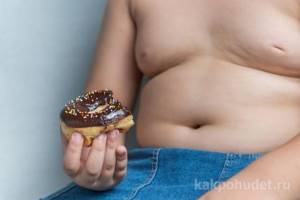
The problem of childhood obesity has increased dramatically in recent years. This is due to reduced physical activity of children, consumption of fast food and other fatty foods.
In addition to the tips described above, if your child is obese, you should adhere to the following recommendations:
- take frequent breaks between meals (up to 3 hours);
- feed the child in small portions 6 times a day;
- give preference to fermented milk products, fish and vegetables;
- sharply limit your intake of sweets and fast food.
Example menu

A sample daily diet menu is as follows:
Breakfast: steamed protein omelette, cottage cheese or vegetable salad with tea.
Second breakfast: apple or oatmeal cookies with yogurt.
Lunch: Vegetable soup, baked fish, dried fruit broth.
Afternoon snack: herbal tea, nuts.
Dinner: Steamed chicken cutlets, buckwheat porridge, green tea.
Fact! You should consume no more than 150 g of bread per day.
Following a diet to noticeably lose weight will take several months. This is the only way to “retrain” your body and get rid of the habit of overeating. Normally, with a diet, a person should lose from two to five kg of excess weight.






